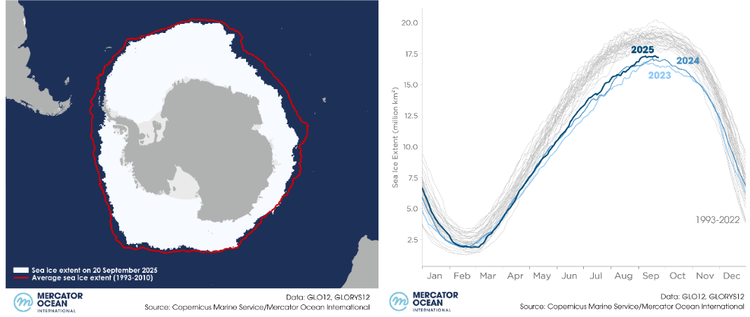
Latest report shows Antarctic sea ice has dropped in coverage – a significant deviation from long-term averages
By
Antarctica. It’s the Earth’s coldest, driest and windiest continent, covered by an invaluable ice sheet holding most of the world’s freshwater. A region home to scientific research stations and a plethora of wildlife, only around 0.4 per cent of its surface is free from snow and ice.
However, new research has shown that the ice coverage, which characterises the continent, has dropped to its third-lowest levels on record.
Enjoying this article? Check out our related reads…
In the latest report from the Sea Ice Bulletin of Mercator Ocean International, researchers recorded the Antarctic sea ice maximum reached an estimated 17.31 million sq km, an eight per cent drop below the 1993-2020 average.
In the Northern Hemisphere, the Arctic sea ice minimum – observed back in September – ranked among the seven lowest ever recorded. Together, this data confirms the downward trend in global sea ice coverage observed in recent decades.

‘For nearly ten years, Antarctic sea ice has remained below long-term estimates,’ said polar oceanographer at Mercator Ocean International, Gilles Garric. ‘This can either represent a natural high variability of sea ice in the region, as observed in previous decades, or a shift in the Southern Ocean’s environment.’
Since 2016, Antarctic sea ice has not recovered to earlier baselines, suggesting a shift in seasonal patterns that dictate polar climate.
On a global scale, the combined Arctic and Antarctic sea ice extent in 2025 remained within the lowest range observed in recent years. In the last three years, global sea ice extent has shown a net deficit of around one million km2 compared to the same period in previous decades.




